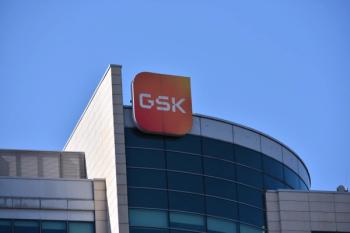
- BioPharm International-05-01-2017
- Volume 30
- Issue 5
CMOs and CROs Have Different Trajectories
CMOs may be gaining as strategic partners to large bio/pharma companies, but they have a much harder path to navigate.
A growing number of observers, including the Wall Street analysts that follow the publicly-traded contract research organizations (CROs) and contract manufacturing organizations (CMOs), have made statements recently suggesting that the CMO industry is following the trajectory that the CRO industry took in the past decade.
In particular, they are suggesting that CMOs will eventually fulfill a large percentage of global bio/pharma companies’ manufacturing requirements through strategic manufacturing relationships the way that large CROs established strategic relationships with large bio/pharma companies to run their clinical research operations. The corollary of that position is that a small number of large CMOs will come to dominate the industry thanks to their scale, scope of capabilities, and ability to win those strategic deals.
The CRO industry made a great leap forward in the years 2007–2009 when most global bio/pharmaceutical companies turned over their clinical research operations to strategic CRO partners. The strategic sourcing deals coincided with the patent cliff and the global financial crisis, events that created great uncertainty for the bio/pharmaceutical industry; these deals allowed the major bio/pharmaceutical companies to shed thousands of employees and convert fixed costs to variable costs. The five CROs that had attained industry leadership during the previous 10 years-Quintiles, PPD, Parexel, Icon, and Covance-were the major winners of those strategic deals, thanks to their billion-dollar scale, global operations, and financial wherewithal.
It may well be that CMOs will take on a bigger share of global bio/pharma’s manufacturing requirements, and that we will see greater consolidation within the CMO industry. But the nature of bio/pharmaceutical manufacturing suggests that a broad CMO takeover of manufacturing is a lot less likely than the CROs’ takeover of clinical research. Clinical research and manufacturing could not be more different, and extrapolating from one activity to the other can easily lead to the wrong conclusions.
Manufacturing is key to revenue
First and foremost, the global bio/pharma business model is to generate revenue by selling manufactured products, not by conducting clinical research. Product supply is crucial to meeting quarterly financial targets, and supply interruptions can damage both the stock price and the brand. Maintaining tight control over supply is a paramount objective, especially for the 20% of products that generate 80% of revenues. Clinical research is necessary for long-term performance, but delayed studies usually don’t have the dire near-term business implications that production problems do.
Secondly, manufacturing is capital-intensive while clinical research is labor-intensive. Capital intensity shapes the manufacturing industry because of the strain it places on cash flow: manufacturing capacity is extremely expensive and must be built years in advance of actual production. Thanks to their large size and hefty profit margins, global biopharma companies have the cash flow and capital resources to make massive investments in manufacturing capacity and technology. For CMOs, however, cash flow and borrowing capacity are limited and they can’t afford to build substantial capacity years in advance for products whose fate they cannot control.
Global bio/pharma companies spent nearly $125 billion (just 11% of operating cash flow) on new plant and equipment in the past six years, much of it to build the capacity they needed as they transitioned their pipelines to biologics (1). The major CMOs spent about 10% of that amount, but it consumed more than 70% of their operating cash flow. So it will be difficult for CMOs to maintain the scale of investment necessary to meet the manufacturing needs of global biopharma companies.
The labor-intensive nature of clinical research has meant that CROs haven’t had to make the big upfront cash outlays that manufacturing requires. CROs can generally hire staff as needed by the contracts in hand; they don’t have to staff up years in advance. So, CROs can fulfill their client’s capacity requirements without the strain on their cash flows.
Fixed cost headwind
The fixed-cost nature of manufacturing is another headwind for the CMO industry. It means that as long as global biopharma companies have captive capacity, they will be tempted to keep products in-house or pull product back from their CMOs in order to absorb those fixed costs. It also means that CMO profitability will be negatively impacted whenever a contract manufacturing facility must be operated at a sub-optimal level of utilization.
In clinical research, CROs solve the fixed-cost problem for bio/pharma companies: bio/pharma companies just hire teams for projects as needed and don’t have to pay the staff once projects are completed. There is little need to bring projects back in-house, and generally they have no capacity to do so.
Finally, bio/pharma companies have a tremendous reservoir of experience for running manufacturing operations. They are often not as efficient and cost effective as CMOs, but there is great depth of engineering, process, and quality knowhow and expertise that only a few CMOs can match. By contrast, most bio/pharma executives would admit that their companies are not great at running labor-intensive activities, and that the increasingly information technology-intensive nature of clinical research is well beyond their competence.
Unbundled response
CMOs have already won the battle for the manufacturing needs of small bio/pharma companies (at least 80% of their production is outsourced) and mid-size bio/pharma companies (at least 60% of their requirements are outsourced). The path to sustained organic growth runs through global bio/pharma but, as described previously, that path is strewn with some major obstacles.
Forward-thinking CMOs are responding to the challenge by breaking out the elements of the value propositions into its constituent parts, and allowing clients to customize an offering that fits their specific needs. Those elements include capabilities such as facility engineering, process development, overhead sharing, supply chain management, and regulatory knowhow. Already, major bio/pharma companies such as Vertex (with Hovione), Amgen (with Patheon), and Sanofi (with Lonza) have formed relationships with CMOs based on innovative combinations of those value components.
These new unbundled business models highlight one more big difference between the CRO and CMO trajectories. Before they became strategic partners, CROs generally sold individual services like site monitoring and data management to the big bio/pharma companies, but the strategic relationships they formed in 2007–2009 gave them the opportunity to bundle those offerings into full service packages.
CROs are bundling and CMOs are unbundling; clearly the two businesses are moving in completely different directions.
Reference
1. PharmSource, Bio/Pharma CapEx Trends 2016 (PharmSource, October 2016).
Article Details
BioPharm International
Volume 30, Number 5
May 2017
Pages: 12–13
Citation
When referring to this article, please cite it as J. Miller, "CMOs and CROs Have Different Trajectories," BioPharm International 30 (5) 2017.
Articles in this issue
over 8 years ago
Case Study: Retrofitting Two New High Purity Water Systemsover 8 years ago
Enhancing Bioprocessing Efficiencies through Run Reproducibilityover 8 years ago
Robots Package Parenteral Productsover 8 years ago
Keeping an Eye on Qualityover 8 years ago
Combination Products Raise New Manufacturing Challengesover 8 years ago
Fusion Proteins Pose Manufacturability Challengesover 8 years ago
Continuous Bioseparations: Fitting the Pieces Togetherover 8 years ago
Engaging with Interest Groups or Industry Associationsover 8 years ago
New Directions in Bioreactor DesignNewsletter
Stay at the forefront of biopharmaceutical innovation—subscribe to BioPharm International for expert insights on drug development, manufacturing, compliance, and more.




